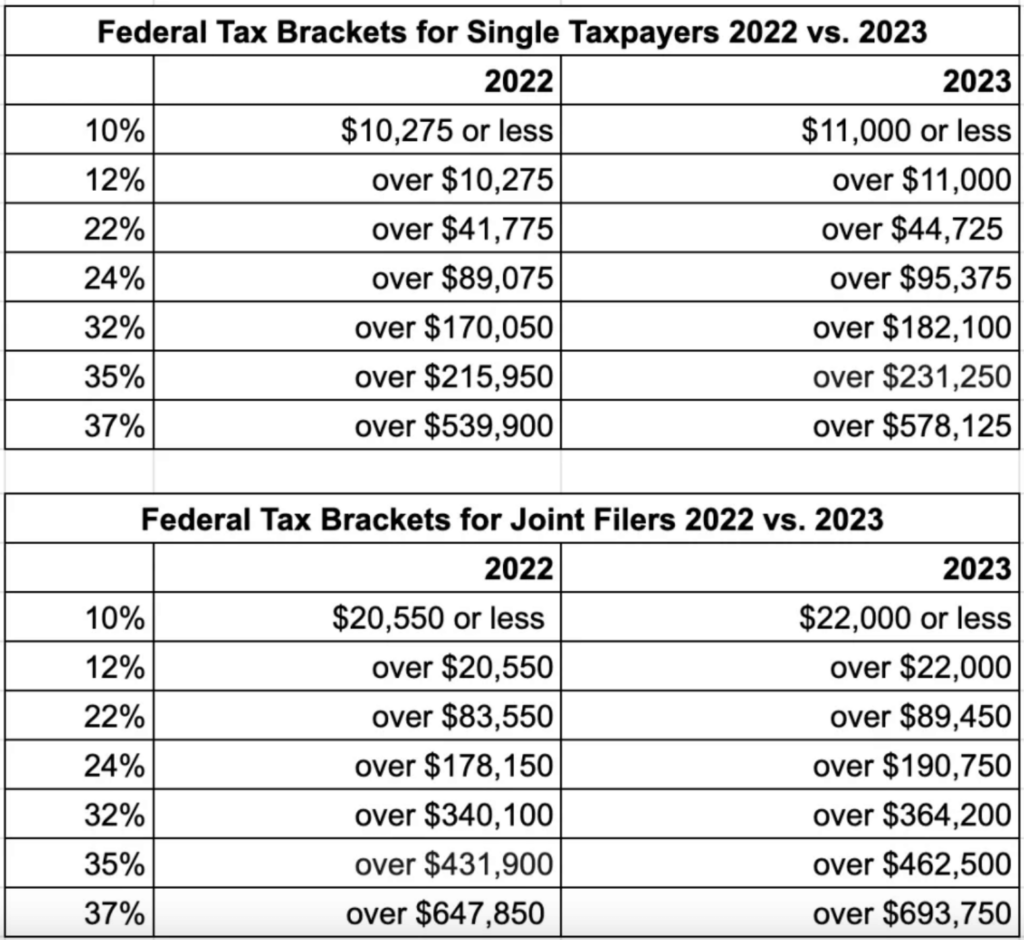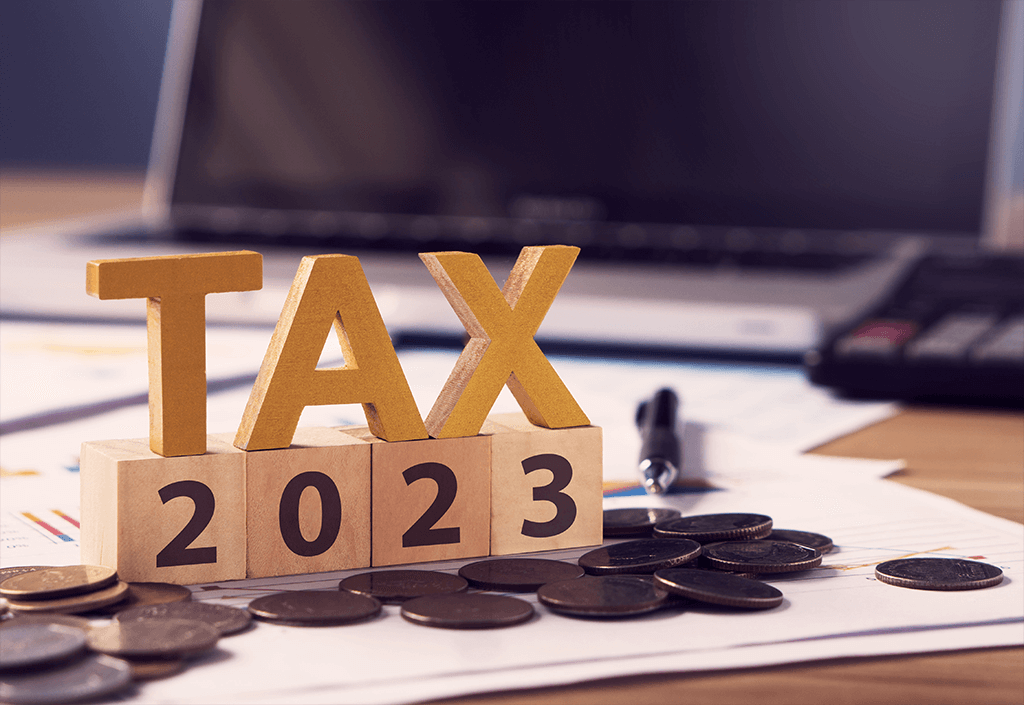The income thresholds for the seven federal tax brackets increased by a bigger-than-normal amount for the 2023 tax year to reflect runaway inflation seen last year.
“They are just the usual changes due to inflation,” Jon Whiten, from the Institute on Taxation and Economic Policy told Yahoo Finance. “More dramatic this year since inflation was also dramatic.”
The inflation-adjusted amounts jumped by more than 7% from 2022, according to the Tax Policy Center, compared with last year’s 3% uptick. The changes themselves are not a new development — the Internal Revenue Service adjusts its tax brackets annually for inflation.
One positive outcome: Taxpayers whose income didn’t rise on par with inflation last year will likely avoid tax bracket creep in 2023 and ultimately pay lower taxes.
Changes to 2023 federal income tax brackets
For the 2023 tax year, there are seven federal tax brackets: 10%, 12%, 22%, 24%, 32%, 35%, and 37%. Your tax bracket is determined by your taxable income and filing status and shows what tax rate you’ll pay on each portion of your income.
According to the IRS, the income thresholds for all brackets will increase as follows:

Remember: These are progressive marginal rates. It doesn’t mean that, if you have $100,000 in taxable income as a single taxpayer, you’re taxed at 24% on that entire amount.
Instead, the first $11,000 is taxed at the 10% rate in 2023, the next dollars up to $44,725 are taxed at 12%, the next dollars up to $95,375 are taxed at 22%, and the last dollars over $95,375 are taxed at 24%.
What these increases mean for you
According to the latest Bureau of Labor Statistics data, wages only increased 4.4% for the 12-month run ending September 2022, up just 2.4% from a year earlier. Though some folks saw a jump in their salaries last year, most of those gains still fell behind rising inflation levels.
“The whole point of adjusting tax brackets for inflation is to reduce the impact or mitigate the impact of inflation,” topld Eric Bronnenkant, head of tax at Betterment. “Let’s say some people got a 10% raise in wages last year, while others may have not gotten any raise at all. Arguably, people whose income outpaced the estimated inflation hike of 7% now may be paying more taxes because their tax bracket is higher, while those with wages with little growth may be paying less.”

What this means is that taxpayers whose salaries didn’t keep up with inflation are able to bypass bracket creep. According to the Tax Foundation, this occurs when inflation pushes you into a higher income tax bracket, which will reduce the value of credits, deductions, and exemptions.
“You still have to remember that a 7% tax bracket increase is still a rough estimate of inflation, and it’s never about any one person’s individual situation,” Bronnenkant said. “It’s possible that inflation was low, but you lived somewhere where your landlord increased your rent 10% and your personal costs may have increased a lot. It’s not perfect for everybody, but it’s the best the IRS can do to average inflation for a large amount of people.”
Source: finance.yahoo.com

